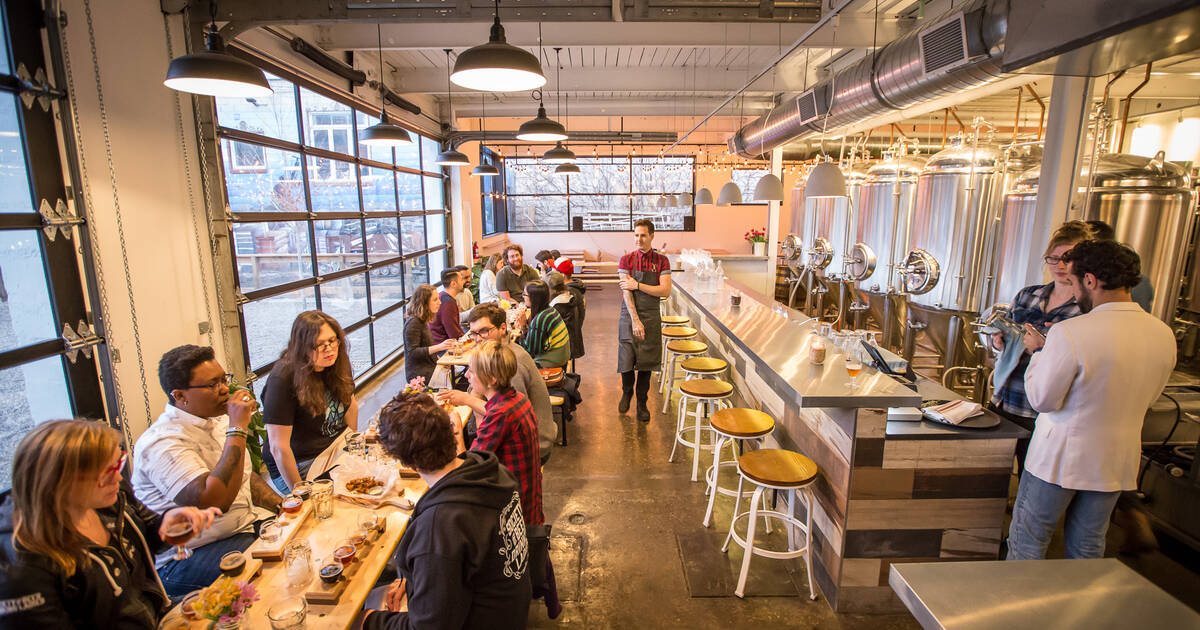
As demand for a product goes up and its industry becomes more robust, monopolies tend to happen: the big guys edge out the little guys who can’t keep up, or just acquire them to avoid any competition.
In food, in tech, in travel, in entertainment — in almost any consumer market — a few large corporations dominate, often under multiple different banners. And their economies of scale make it harder for newcomers to emerge.
And yet in the last decade in the beer world, indie manufactures have reigned in Toronto and all over the continent.
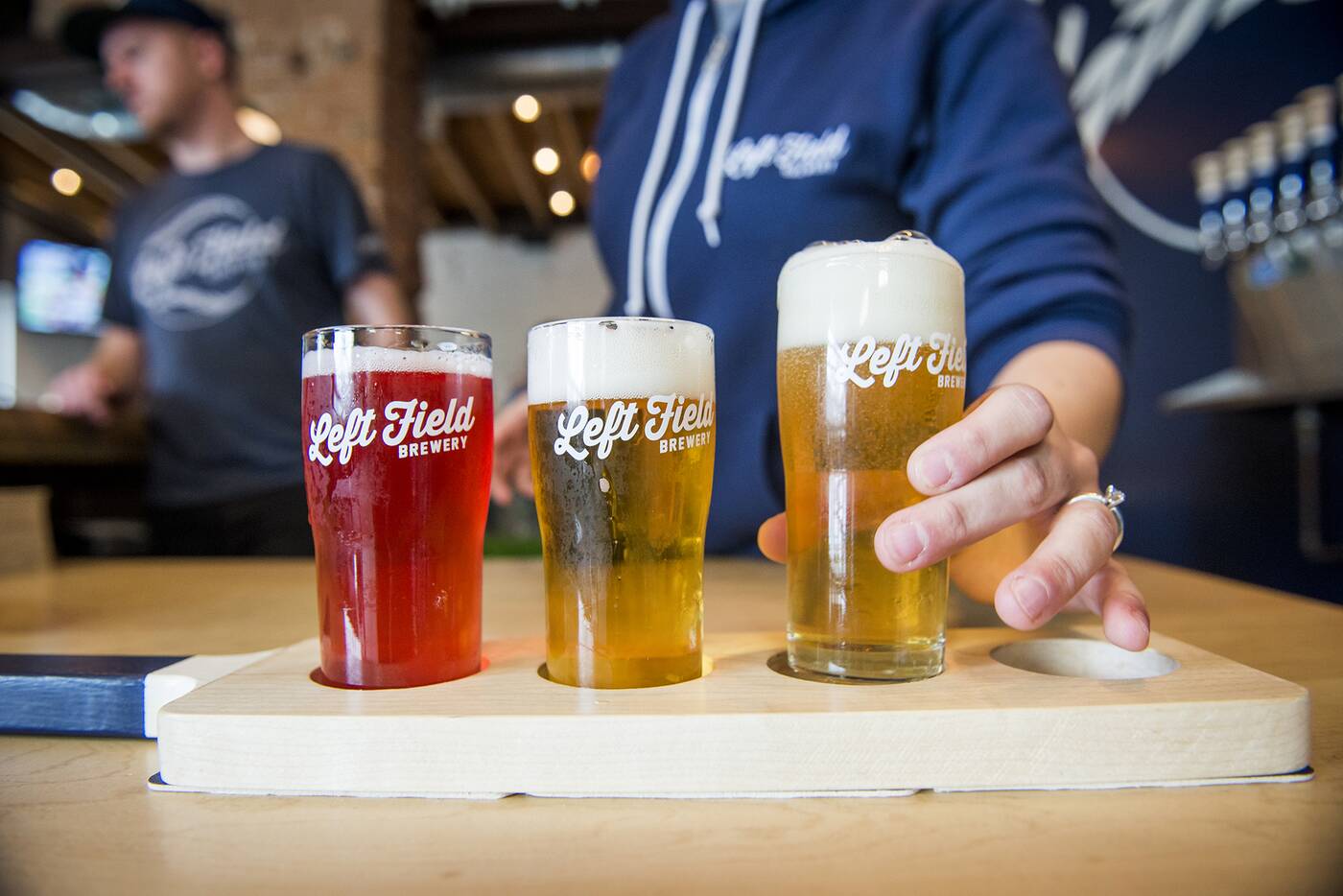
Left Field brewery in Toronto is all about the baseball theme from the names of its beers to the designs of its tasting room. Photo by Hector Vasquez.
Ontario now has more than 275 craft breweries, over 40 of them located in Toronto, and while beer sales in Canada have actually remained pretty flat and production has even decreased in recent years, the number of brewing facilities has risen dramatically.
North Americans are notorious suckers for the cheap and the quick and the convenient, but Toronto beer drinkers have veered in the opposite direction in the last ten years, seeking out the artisanal, the small batch, the unconventional.
Molson Canadians and Coors Banquets have been swapped for spontaneously fermented lambics, tropical milkshake IPAs, fruity dry-hopped sours and endless varieties of barrel-aged ales — and these are only the tip of the experimentation iceberg that is inextricable from the craft beer movement in Toronto and beyond.
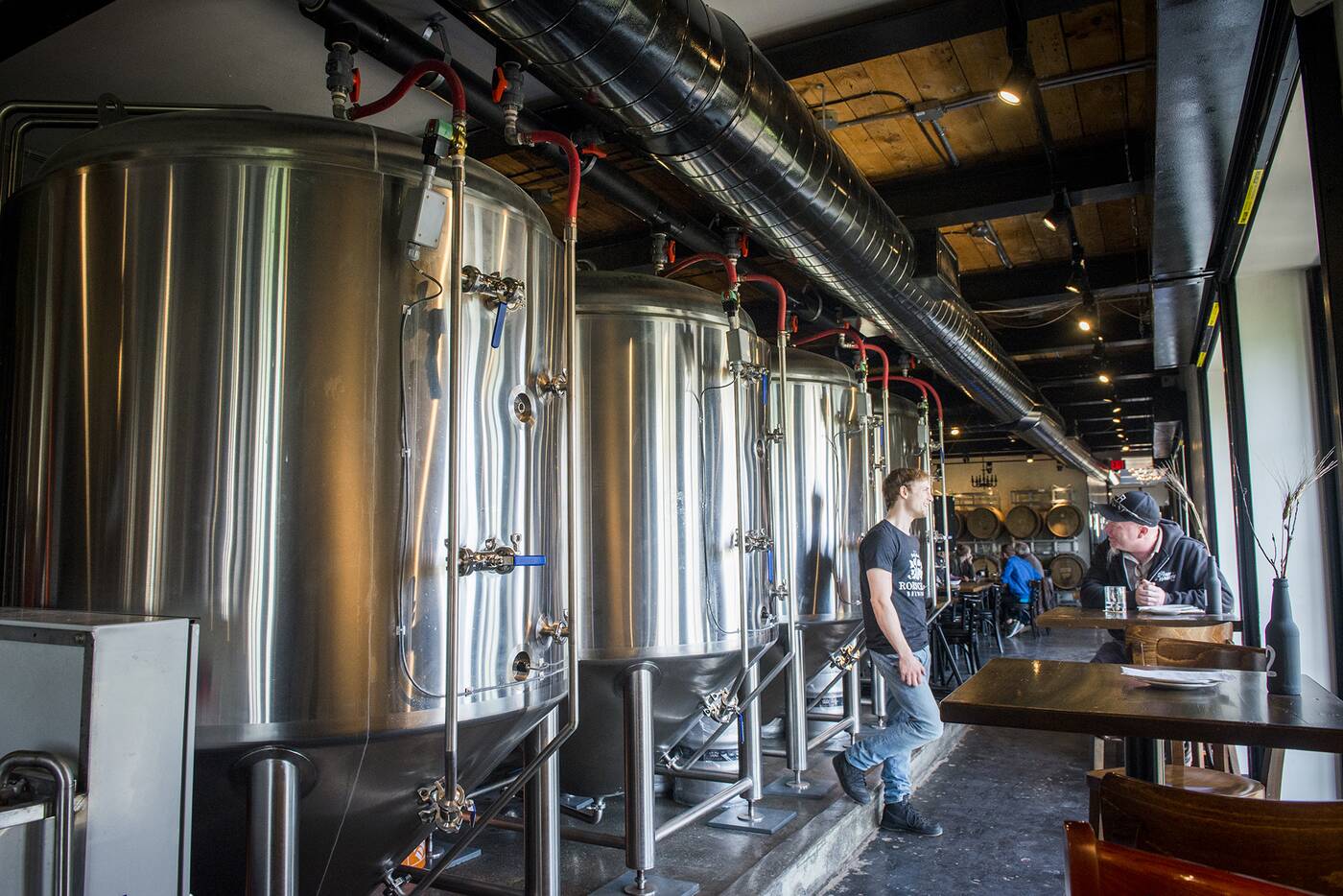
Rorschach Brewery took over a century old house that was once home to one of the location of Le Papillon. Photo by Hector Vasquez.
Beer aficionados are more than happy to pay $15 a bottle or more for the stuff, like a delicacy or piece of art — arguably both, with the bottle and can art that Toronto craft brewers have been putting out.
Before 2010, there were only a handful of craft breweries in Toronto, among them some now-bigtime names like Steam Whistle Brewing, Mill Street Brewery, Beau’s All Natural Brewing Co. and Amsterdam Brewery.
Key players like Bellwoods Brewery, Left Field Brewery and Hamilton's Collective Arts Brewing joined in the early 2010s before a brewery boom happened from 2015-2018 or so, when Blood Brothers, Henderson, Halo, Burdock and others popped up.
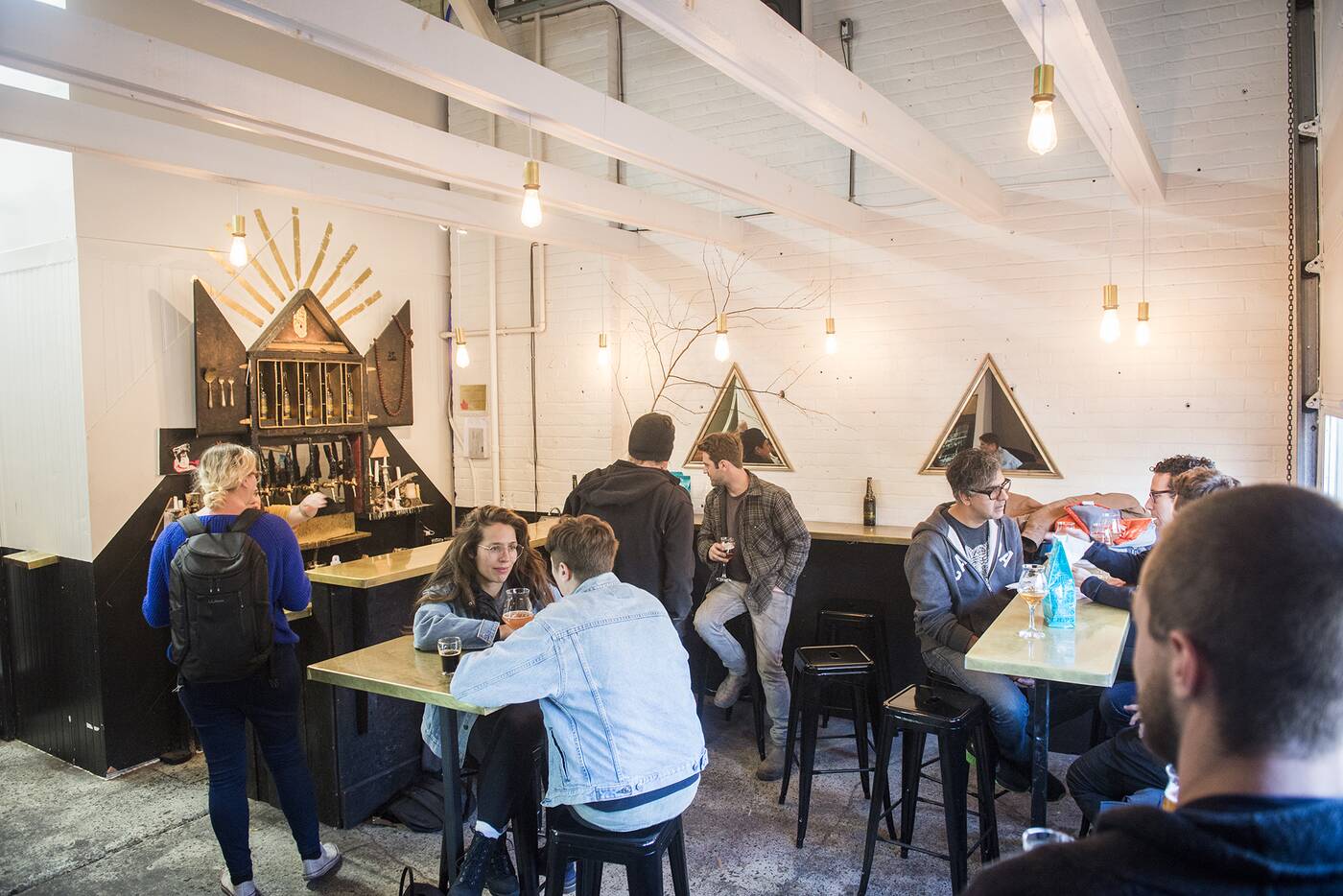
Blood Brothers has a popular tap room to try its offerings on Geary Avenue. Photo by Hector Vasquez.
You might recognize some of these names from the shelves at the LCBO or the Beer Store. But others are only available at the breweries themselves, in on-site bottle shops or taprooms, which adds to the novelty factor that has partly driven the industry.
“Taprooms are at the forefront of beer education,” says long-time beer writer and Cicerone beer certification program instructor Crystal Luxmore. “When you walk in, you know that everyone there has tasted it all and is really good at explaining it. They know what they’re talking about and you can sample everything.”
Craft brewers are just that: craftspeople. Craftspeople who are focused on the full flavour, the unique variety, the local ingredients and historic roots of their product, and are excited to share it with the public.
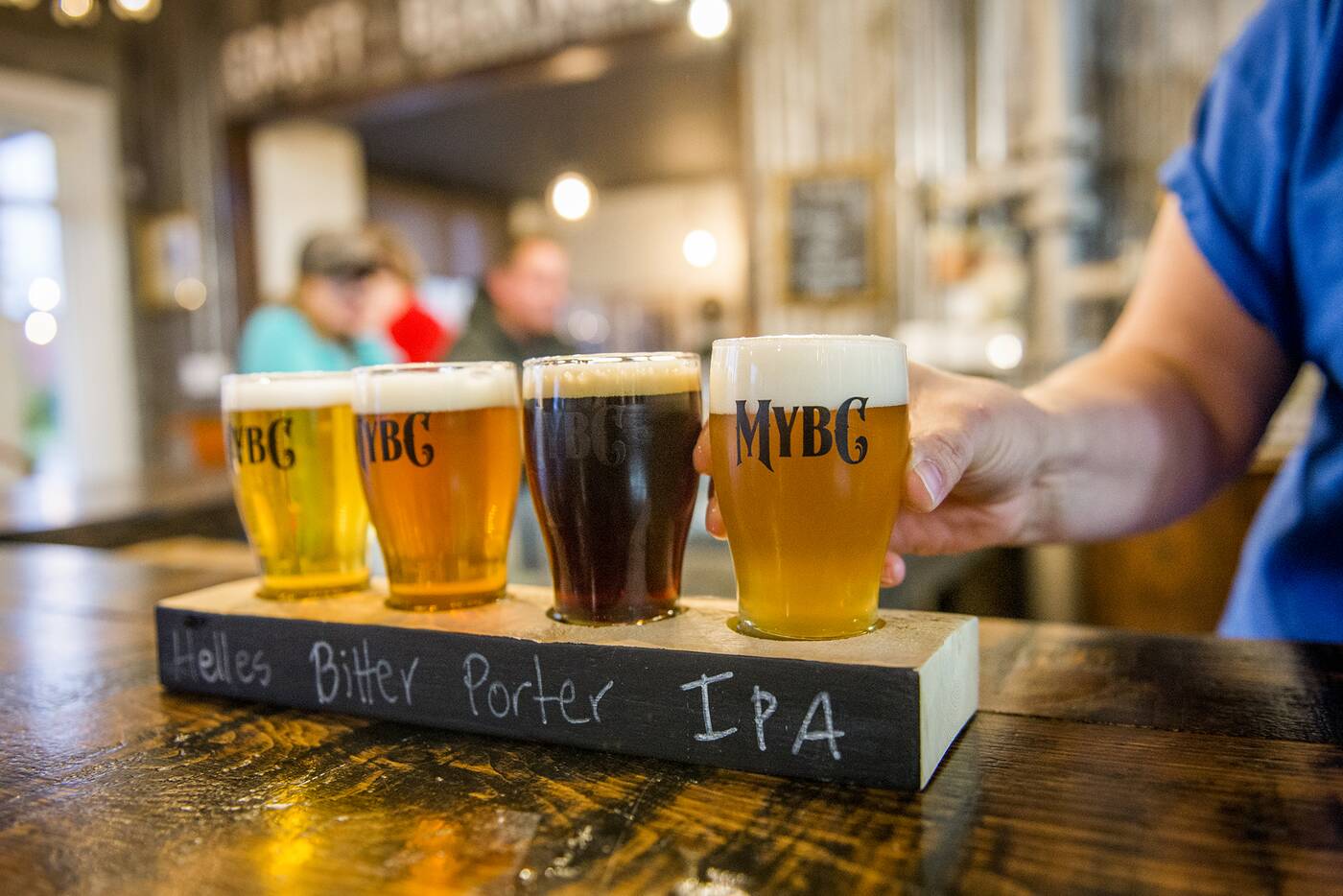
Muddy York is a destination for craft beer in East York. Photo by Hector Vasquez.
These are some the factors that have been most appealing to Toronto beer drinkers over the last ten years.
“Torontonians are very open minded, and the way we approach our beer is very similar,” Luxmore, who is also one-half of the Beer Sisters alongside her sibling Tara, says. “People want to know what’s new and what’s experimental. They’ll drink a different beer every time they go to the bar.”
A habit that's fitting, since another thing that’s changed in Toronto beer in the last 10 years is the sheer variety of product to choose from.
“A thing that was new [in 2010] was adding fruit, spices and weird culinary flavours. Even the idea of a seasonal beer was really new. Whereas now, not only do breweries do seasonals, they have all kinds of one-offs and exclusives,” Luxmore says, referencing Rorschach, which won't often make the same beer twice. “The hectic pace of new beer releases has really changed the landscape.”
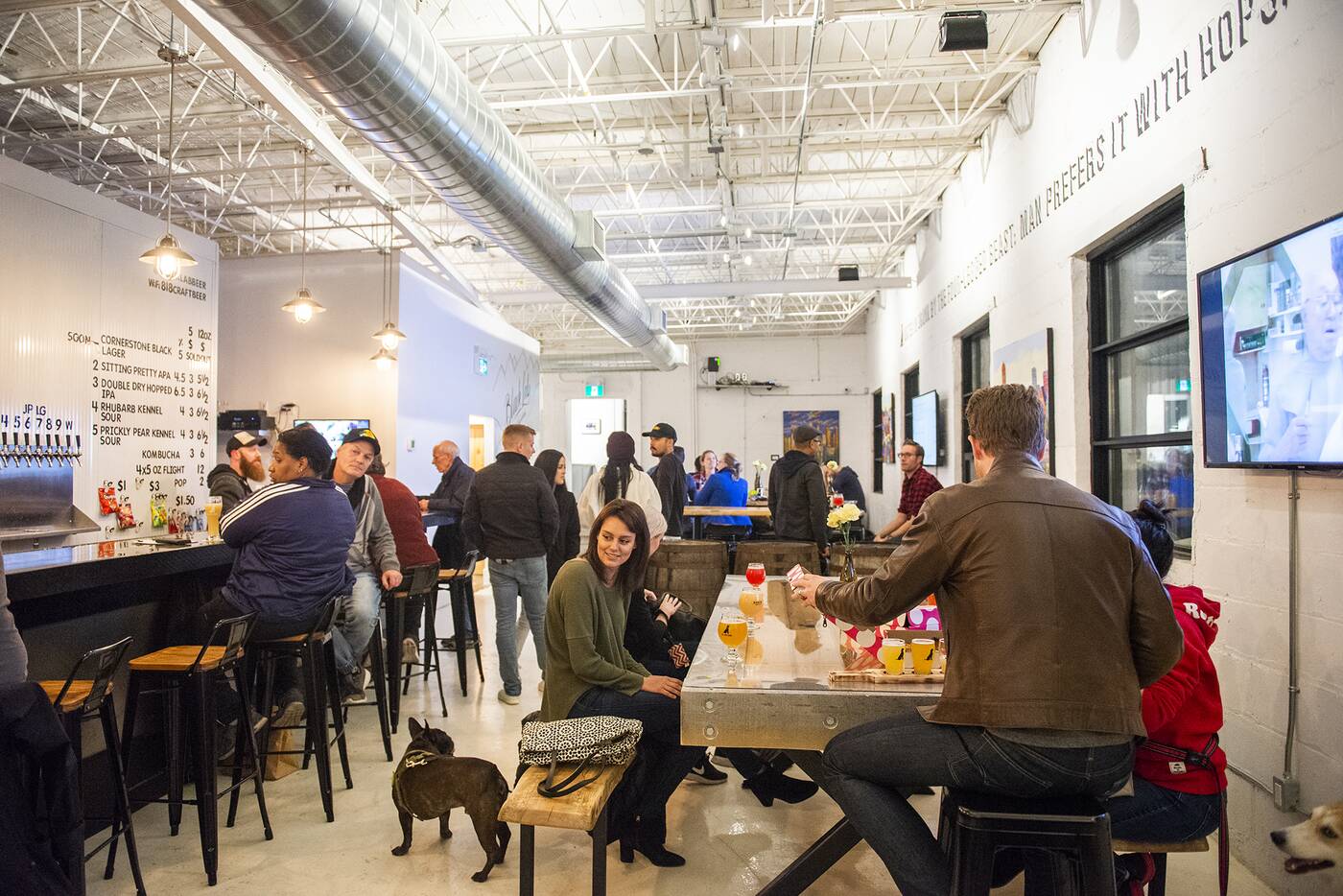
Black Lab is known for its dog-friendly tap room in Leslieville. Photo by Hector Vasquez.
Though that landscape has expanded exponentially, it’s also been limited in ways that are unique to Ontario: mainly, the fact that alcohol retailers are monopolized by the province.
“I think part of the craft beer boom was the excitement that we didn’t have to buy what the LCBO decided anymore,” says Tomas Morana, co-owner of the longtime Toronto craft beer staple Bar Volo, which also runs one of the largest if not THE largest craft beer festival in Canada, Cask Days.
“If there aren’t those specialty brands out in the market, people will never really have a chance to know what's out there.”
Morana feels that the onset of the craft beer boom in Toronto was led by bars like C’est What, Beer Bistro, and the Only Cafe, which started to offer a larger variety of beers from out-of-province microbreweries in the early 2000s.
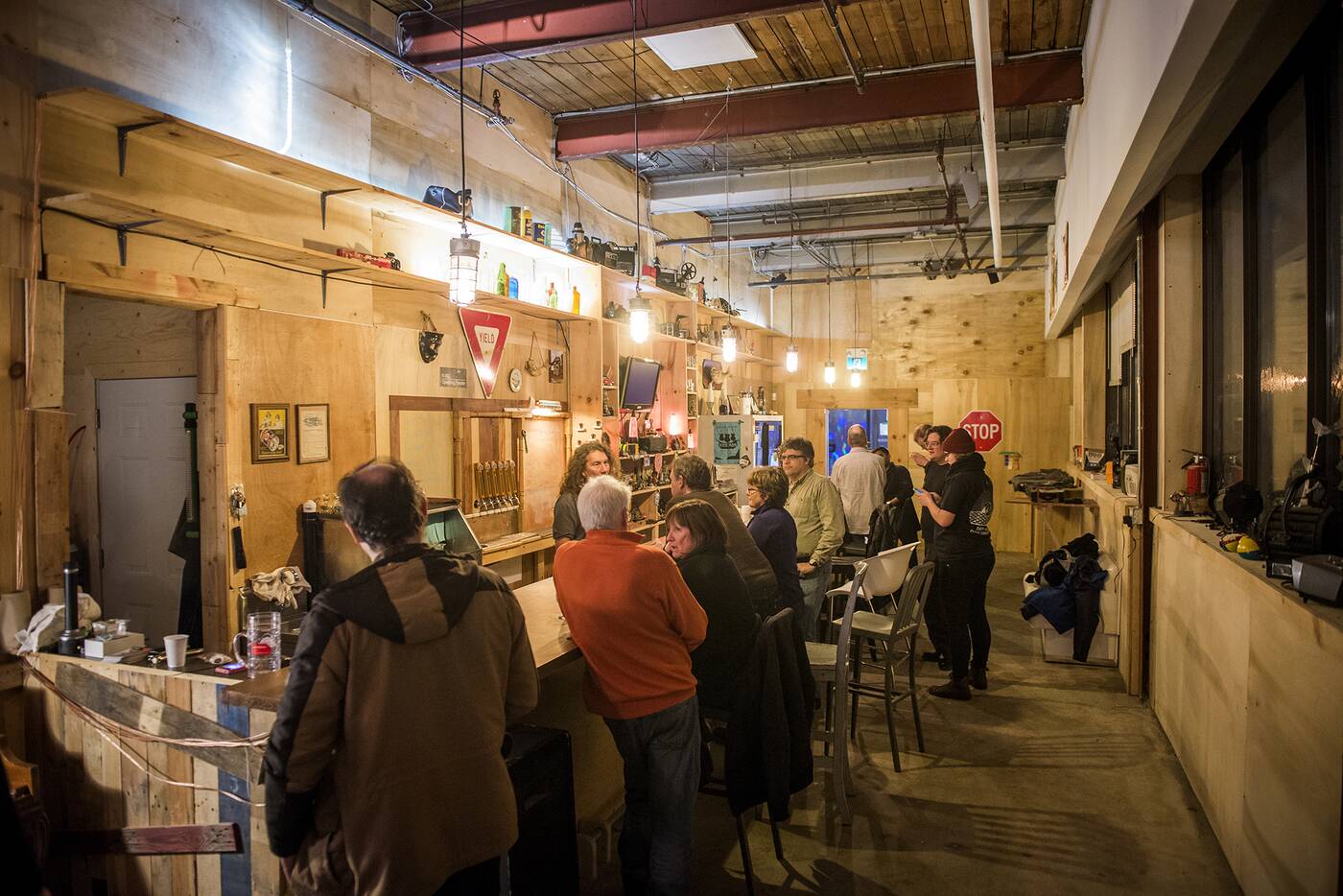
Shacklands is one of many breweries that have popped up in the Stockyards District. Photo by Hector Vasquez.
This pushed local beer manufacturers to be more experimental in order . to keep up with what brewers elsewhere were doing. “The LCBO [and Beer Store] were the only outlet[s] to sell beer, so breweries made what was accessible to the customers at the LCBO. That was the model,” he says.
Volo’s own importation of beers from places like Montreal, which was “years ahead of Toronto as far as brewpub culture,” helped influence the Toronto scene. It was around the turn of this decade that more and more breweries began emerging, starting with Bellwoods Brewery and Indie Alehouse in the early 2010s.
“They were opening up with a completely new business model, saying ‘We're not even going to sell to the LCBO, we're just going to sell it right out of our retail store,’” he says. “All of a sudden beer bars weren’t the only place you could go to drink craft beer.”
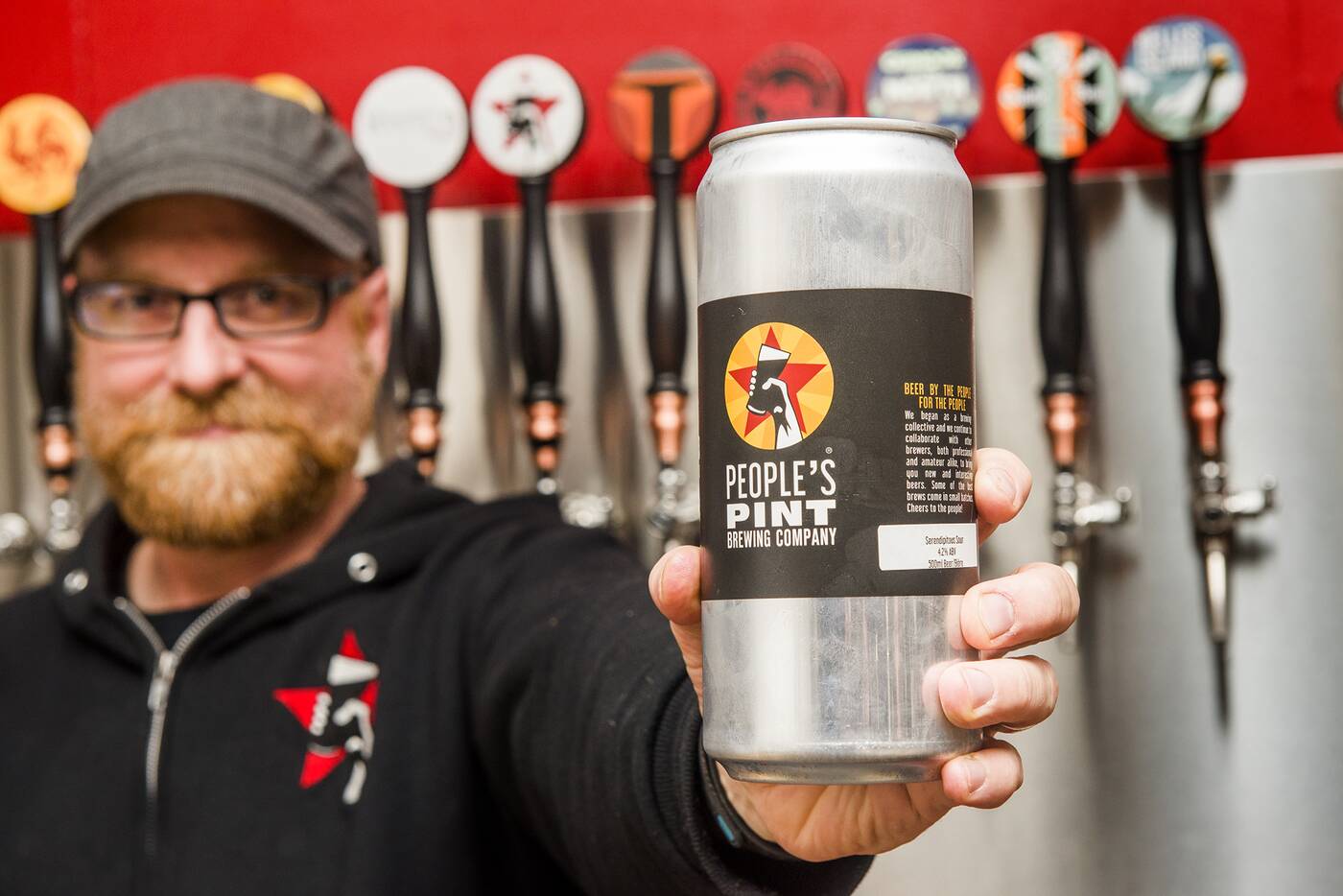
People's Pint helps would-be home brewers create their own beer. Photo by Hector Vasquez.
And with the explosion of breweries in the late 2010s — to the point that there is now “literally a brewery in every single neighbourhood,” Morana says — came a far more massive crowd of beer fans than the small but dedicated clientele that bars like Volo saw at the beginning of the movement.
Events like Cask Days have certainly helped foster and unite this growing community, as well as organizations like the Society of Beer Drinking Ladies, which started in the mid 2010s.
“SOBDL really created a space for the breadth of beer drinkers that already existed, while also introducing beer to new people,” Luxmore says. “It’s not always fun to walk into a bar by yourself and order a flight as a woman, so I think that’s a really cool thing that Toronto has going on.”
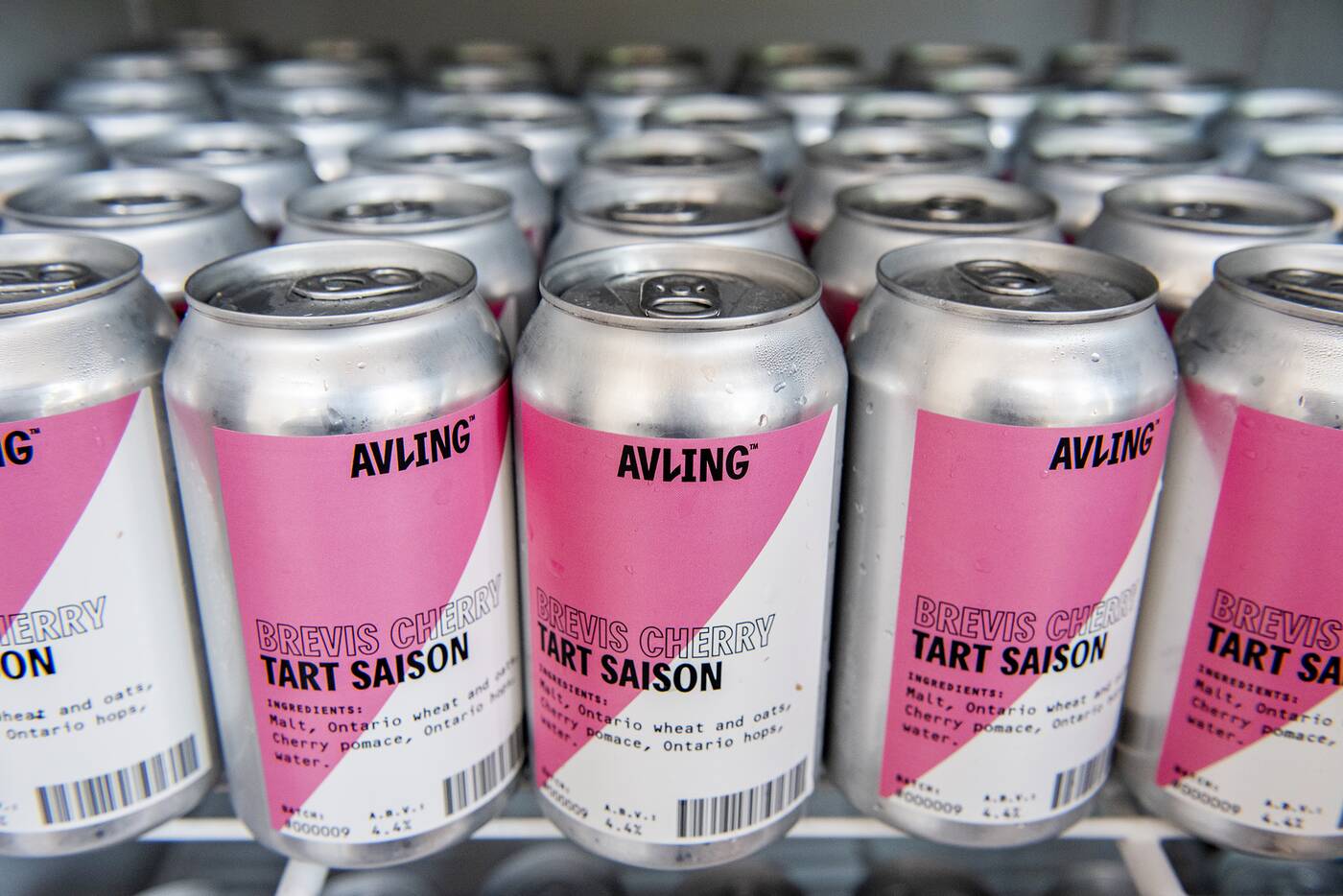
Avling is one of many Toronto craft beer makers experimenting with sour beers and seasonals. Photo by Hector Vasuez.
Beer fests have also encouraged experimentation on behalf of beer creators, which has led to a number of breweries finding a niche style to hone in on amid an expanding, arguably even over-saturated market.
Shacklands Brewing, for example, has become known for its Belgian beers, and Godspeed, for German-style lagers and Japanese-inspired beers.
“I think we’ll see more and more of that,” Luxmore says looking ahead and remembering that when craft breweries in the area first surfaced, most tried to offer a suite of all different types of beers instead of becoming a master of one or two.
And while more breweries continue to pop up, the experts think Toronto beer drinkers will likely continue to enjoy both local and global brews as competition and beer knowledge increases.
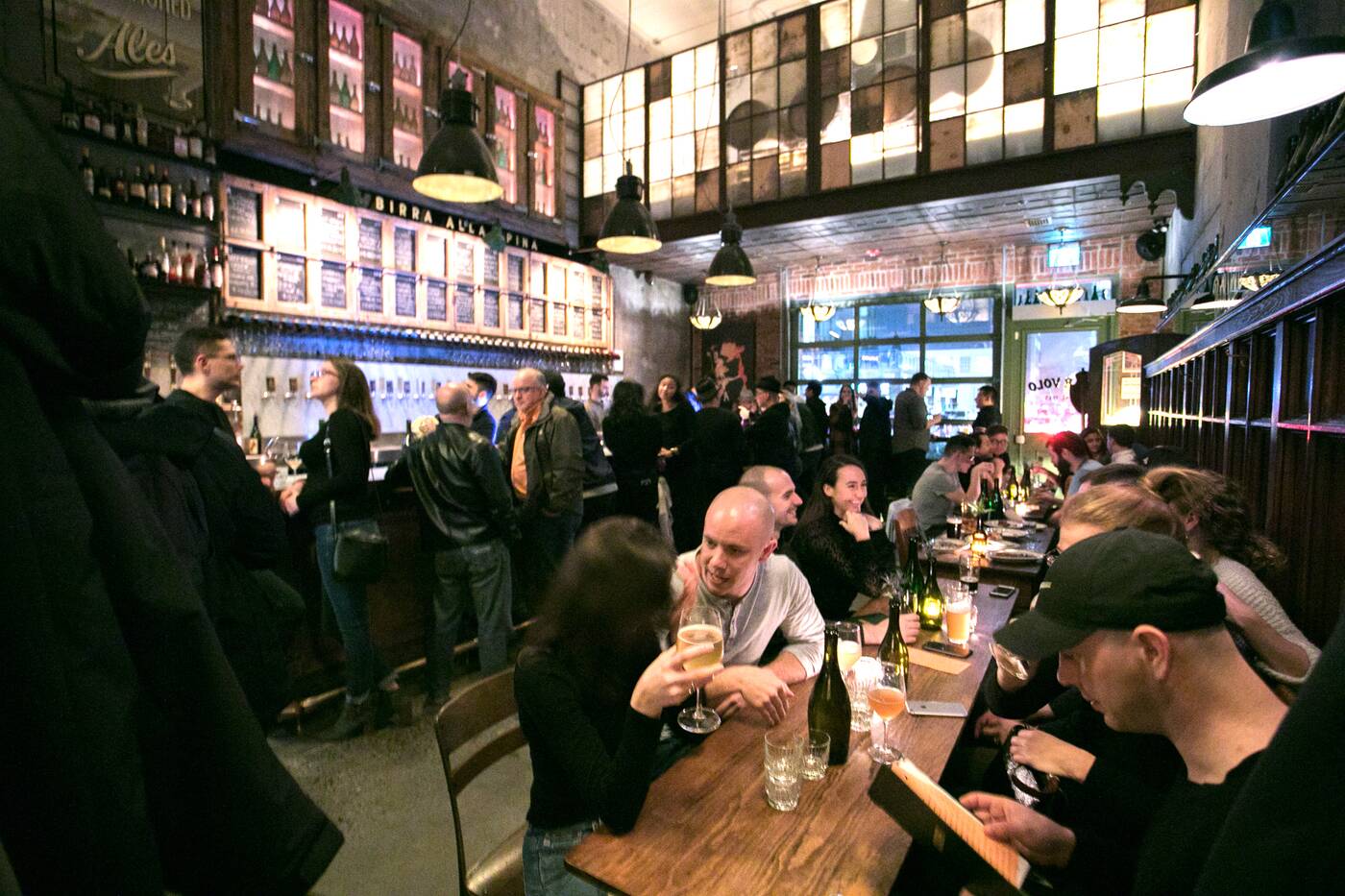
The new Bar Volo near Yonge and Wellesley features plenty of craft beer on its menu. Photo by Fareen Karim.
"There are things being done with beer in the world that aren’t being done locally," Morano says. "It's a bit of a scary time because it’s difficult to keep taplines and keep beers on shelves when there’s another brewery that’s newer, that is making something better or pouring more money into marketing and advertising."
Though things have evolved dramatically in Toronto's craft beer scene in the last decade and will inevitably continue to do so, it's good to keep in mind that regardless of wacky new takes on old styles, beer is still beer, in the end.
"Sometimes craft beer can be presented in a way that seems like too much for people," Morano says. "Beer is supposed to be accessible, the 'common person's' beverage. It shouldn’t be complicated, and really, it's not."
by Becky Robertson via blogTO

No comments:
Post a Comment